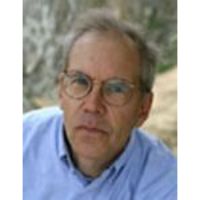
Journalist Fellowship Program
Kavli Institute for Theoretical Physics
George Johnson writes about science for The New York Times, Scientific American, and other publications from Santa Fe, New Mexico. His most recent books are "Miss Leavitt's Stars: The Untold Story of the Woman Who Discovered How to Measure the Universe" and "A Shortcut Through Time: The Path to the Quantum Computer." Others include "Strange Beauty: Murray Gell-Mann and the Revolution in 20th-Century Physics" and "Fire in the Mind: Science, Faith, and the Search for Order," which were finalists for the Aventis and Rhone Poulenc Science Book Prizes.
A winner of the AAAS Science Journalism Award, he is co-director of the Santa Fe Science-Writing Workshop and a former Alicia Patterson fellow. A graduate of the University of New Mexico and American University, his first reporting job was covering the police beat for the Albuquerque Journal. He has been a reporter for the Minneapolis Star and an editor of the Week in Review section of The New York Times. He can be found on the Web at talaya.net.

Physics is something I follow like others do baseball, resulting over the years in a stream of articles and books on cosmology, superstring theory, and quantum mechanics. But I didn't really know the field until my two months at Kavli. No matter how much time you spend as a journalist reading (or trying to read) papers and interviewing physicists, there is no substitute for hanging out with them day after day, sitting in on chalkboard talks (I was glad to see real chalkboards) or overhearing them arguing in the halls. Just as important were encounters away from the institute -- dinner at a Mexican dive in Goleta, lunch at the Beachside Cafe, or a hike to Cathedral Peak. On weekends I explored Santa Barbara and the coast.
During my stay there were seminars on string phenomenology, gravitational lensing, and something called stochastic geometry and field theory, attracting, as Kavli tends to do, the top people in the world. The talks were not aimed, of course, at nonspecialists like me, but I was encouraged at how much of the flavor of a field I could absorb osmotically. I found many of the scientists as eager to learn about the strange rituals and customs of my own profession as I was about theirs, and our Friday sessions on science and the press erupted into some spirited discussions.
An added bonus was getting a taste of the academic life, riding my bicycle along Atascadero Creek to my very own office. Getting my own coffee cup and library card. Months later I still get administrative mail from the University of California ( I seem to appear in its computers as an ex-employee) on how to extend my health coverage with a Cobra plan or roll over my retirement account. For someone who works independently from a home office, it was fun for a brief while to belong.